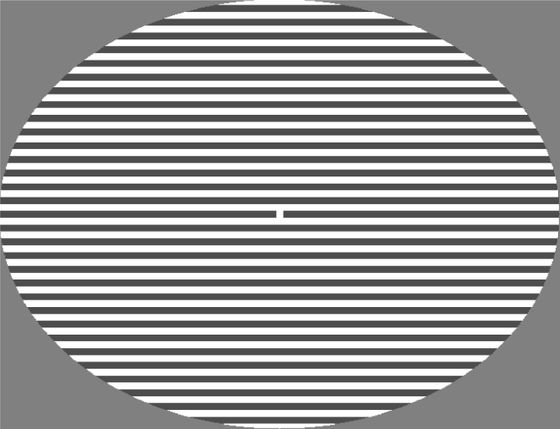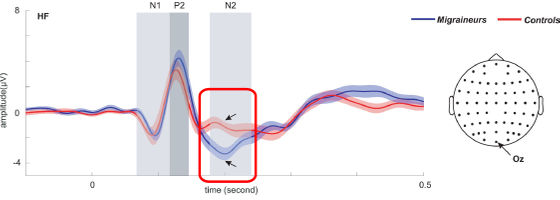It turns out that the cause of migraine is `` the visual cortex that is easier to excite than ordinary people ''

Migraine, a repeating throbbing
Differences in early and late pattern-onset visual-evoked potentials between self- reported migraineurs and controls-ScienceDirect
https://www.sciencedirect.com/science/article/pii/S2213158219304693
The brain of migraine sufferers is hyper-excitable, new study suggests
https://www.birmingham.ac.uk/news/latest/2020/02/brain-of-migraine-sufferers-is-hyper-excitable-new-study-suggests.aspx
The cause of migraines could be in sight (quite literally)-bbc science focus magazine
https://www.sciencefocus.com/news/the-cause-of-migraines-could-be-in-sight-quite-literally/
Some people with migraine experience visual anomalies, such as flashing dark spots, where glittering spots appear afterimages of the sun directly in the field of vision. So, a research group of Birmingham University psychologist Ali Mazaheri et al. Who thought that migraine might be related to the part of the brain that processes vision is conducting an experiment to examine the brain function of migraine patients. I did it.

by
A total of 60 women, 29 female migraine patients and 31 non-migraine women as controls, participated in the experiment. In the experiment, subjects were shown a striped grid pattern that stimulates the visual cortex, and then conducted a questionnaire asking if they were uncomfortable looking and if they saw any visual phenomena. . The following is an example of the striped grid pattern used in the experiment.

The research group further showed participants the grid pattern of the striped pattern displayed on the PC monitor, asked the mouse to click at the timing when discomfort and visual distortion were maximized, and measured the brain wave during that time We then examined the differences in EEG in the visual cortex between migraine patients and those who did not.
A study group analyzed both the visual stimulus questionnaire and the results of electroencephalography measurements and found that the visual cortex of migraine patients responds greatly to visual stimuli. . The following is the EEG graph of the subject during the experiment, where the horizontal axis represents time and the vertical axis represents the EEG amplitude. Looking at the area surrounded by the red frame, it can be seen that there is a significant difference between the blue line representing the EEG of migraine patients and the red line of the control group. This means that migraine patients respond more violently to visual stimuli.

It has also been found that the visual cortex responds hypersensitively to those who report visual phenomena in the initial questionnaire, even in a group without migraine. Chun Yuen Fong, co-author of the dissertation, commented on the results of this experiment: `` Most migraine patients experience photophobia in daily life, which can cause hallucinations, visual discomfort, and eye pain with strong light. Experience, which suggests a connection between migraine and the visual cortex. '
'Our research has shown that the visual cortex of migraine patients is likely to have some sort of abnormality in processing external information. The results may be only part of the picture because some people are sensitive to but have never experienced a migraine. '
The research group aims to develop a technology to predict or prevent the occurrence of migraine by examining `` how changes in migraine aura will change response to visual stimuli '' It is going to go.
Related Posts:
in Science, Posted by log1l_ks







